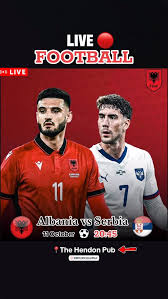
Introduction
The rivalry between Serbia and Albania has long been marked by historical tensions that spill over into various domains, including sports, politics, and cultural exchanges. This narrative took a notable turn recently, especially in the context of football, illustrating not only the competitive spirit but also the underlying socio-political issues that continue to affect both nations. Understanding this rivalry is essential for fans, political analysts, and anyone interested in the geopolitics of the Balkans.
Sports Rivalry
In the world of sports, Serbia and Albania have experienced significant clashes, particularly in football. Matches between the two nations often spark intense emotions, reflecting the historical grievances and national pride. The notable incident during the UEFA Euro 2016 qualifier, when a drone carrying a political banner flew over the stadium, resulted in a brawl on the field, further fuelling the animosity between the two groups. Most recently, Serbia and Albania faced off during the FIFA World Cup qualifiers, attracting significant media attention and drawing passionate crowds both in stadiums and in front of screens.
Political Context
The rivalry is rooted deeply in political history, particularly the conflicts in the 1990s, which have shaped nationalist sentiments. Issues such as the status of Kosovo—declared independent by Albania but still claimed by Serbia—have been particularly divisive. This ongoing dispute often finds its way into sports, with fans using matches as a platform to express their nationalistic fervor. In recent months, talks aimed at normalizing relations have been seen, but these often stall amid provocations and hardline rhetoric.
Media and Public Sentiment
The media plays a crucial role in both nations’ perception of each other. Coverage tends to amplify the rivalry, often depicting matches as more than just games, but as battles for national pride. Football federations of both countries have taken measures to defuse tensions, including engaging with respective fanbases to encourage sportsmanship and peace. However, the lingering sense of rivalry remains potent, often leading to increased security measures during matches.
Conclusion
As Serbia and Albania continue to engage both on the pitch and on a political level, the significance of their rivalry is bound to persist. Future encounters will undoubtedly be closely scrutinized as they hold the potential to either exacerbate tensions or gradually facilitate a path towards reconciliation. For fans and political analysts alike, tracking the evolving dynamics of Serbia vs Albania remains crucial, as both nations navigate a complex landscape of history, identity, and competition. The outcome of future matches may not only reflect athletic prowess but also the prevailing sentiments that define the region.

